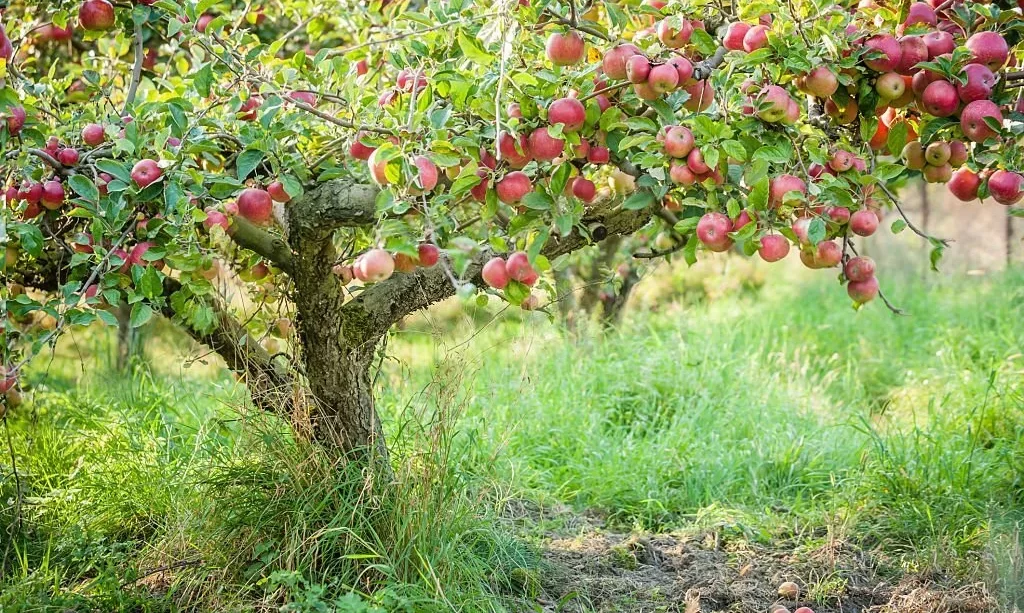Apple trees, with their lush foliage and bountiful fruit, have held a special place in human culture and agriculture for centuries. These venerable trees have graced orchards, gardens, and landscapes with their beauty and provided us with a delicious bounty. Yet, the question of how long apple trees live often piques our curiosity. In this article, we embark on a journey to unravel the lifespan of these remarkable trees. Apple trees, known for their deciduous nature, fruitful branches, and seasonal cycles, have been cultivated worldwide for their sweet and crisp apples. Whether you’re a seasoned orchardist or simply a lover of these iconic trees, understanding the factors influencing their lifespan can deepen your appreciation for their role in nature and agriculture.
Apple Tree Basics
Before we dive into the intriguing world of apple tree lifespans, let’s get to know these remarkable trees a bit better:
Apple trees belong to the genus Malus, and they are deciduous, which means they shed their leaves in the fall. This shedding is part of their natural cycle, as they prepare for the winter dormancy period. In the spring, apple trees burst forth with vibrant foliage and blossoms that eventually give way to the coveted fruit.
Apples come in a dazzling array of varieties, each with its own flavor, size, and color. From the sweet and crisp Honeycrisp to the tart and aromatic Granny Smith, there’s an apple for every palate. Apple trees typically produce fruit on spurs—short, woody branches that bear blossoms and, subsequently, apples.
These trees follow distinct seasonal patterns. They bloom in the spring, set fruit during this time, and then enter the growing phase. As the fruit matures, it gradually transitions to a harvest-ready state in late summer or fall. The leaves change color in autumn before falling, marking the onset of winter dormancy. With the return of spring, the cycle begins anew.
Now that we’ve acquainted ourselves with the basics of apple trees, let’s delve into the intriguing subject of their lifespan and the factors that influence it.
Determining Lifespan
Determining the lifespan of an apple tree is not a straightforward matter. It depends on various factors, and it’s important to distinguish between the productive lifespan and the overall lifespan of these trees.
- Productive Lifespan: The productive lifespan of an apple tree refers to the period during which it bears a substantial quantity of fruit. This phase typically spans around 15 to 25 years, though it can vary depending on factors like variety, care, and growing conditions. During these years, the tree is at its peak for producing apples.
- Overall Lifespan: The overall lifespan of an apple tree, on the other hand, encompasses the entire duration from planting to the end of its natural life. In favorable conditions with proper care and disease management, apple trees can live for several decades, ranging from 15 to 100 years or even longer.
Understanding this distinction is crucial, as it allows us to appreciate that even after an apple tree’s peak fruit-bearing years, it can continue to grace our landscapes and provide value in other ways.
Factors Affecting Apple Tree Lifespan
The lifespan of an apple tree is influenced by a multitude of factors, making it a dynamic and context-dependent concept. Here are some of the key factors that can affect how long an apple tree lives:
- Variety: Different apple tree varieties have varying lifespans. Some may be naturally longer-lived, while others are shorter-lived but offer unique flavors and characteristics.
- Growing Conditions: The environment in which an apple tree is planted plays a significant role in its lifespan. Factors such as soil quality, climate, and access to sunlight all affect tree health and longevity. Well-draining soil and adequate sunlight are particularly important.
- Pests and Diseases: Apple trees can fall victim to a range of pests and diseases, including apple scab, fire blight, and aphids. Effective pest management and disease control can prolong the tree’s life by preventing damage and stress.
- Pruning and Maintenance: Proper pruning and regular maintenance are essential for promoting tree health and longevity. Pruning helps improve air circulation, reduce disease susceptibility, and prevent overcrowding of branches.
By considering these factors and taking appropriate measures, growers and gardeners can contribute to the longevity and vitality of their apple trees.
- Due to California Department of Agriculture we CAN NOT ship this item to the state of California***
- 4-5ft tree in a 1 gallon pot
- Bearing fruit age
- Cannot Ship to HI or AK
Typical Lifespan Range
The lifespan of apple trees varies widely depending on the factors we’ve discussed. However, there is a general range that can give us a sense of what to expect:
- Productive Years: Apple trees typically bear a significant quantity of fruit for about 15 to 25 years. During this period, they are at their most productive, yielding delicious apples for harvest.
- Overall Lifespan: Beyond their productive years, apple trees can continue to live for many more decades. In favorable conditions and with proper care, apple trees can have an overall lifespan ranging from 15 to 100 years or even more.
It’s important to note that the productive years represent the period when the tree produces the most fruit, but it doesn’t necessarily mark the end of the tree’s life. With attention to care and maintenance, apple trees can remain valuable parts of orchards and gardens for a long time.
Prolonging Apple Tree Lifespan
Prolonging the lifespan of an apple tree involves careful and consistent care. Here are some strategies to consider:
- Pruning and Training: Regular pruning helps improve air circulation, reduce disease susceptibility, and encourage the growth of productive branches. Training the tree’s shape can also promote longevity and ease of maintenance.
- Disease Management: Keep a vigilant eye out for common apple tree diseases and pests. Early detection and prompt treatment can prevent serious damage and stress to the tree.
- Proper Care: Ensure that your apple tree receives adequate water, nutrients, and sunlight. Well-draining soil and a balanced fertilizer regimen are essential for tree health.
- Mulching: Apply mulch around the base of the tree to conserve moisture, regulate soil temperature, and reduce competition from weeds.
- Stress Reduction: Minimize stress on the tree by avoiding excessive pruning, overbearing (when the tree produces too many apples), or neglecting care during extreme weather conditions.
By implementing these practices, you can extend the life of your apple tree and continue to enjoy its beauty and fruitfulness for many years.
- Apple Tree Fertilizer for All Apple, Pear, Nut and Fruit Trees, Liquid Plant Food
Conclusion
In conclusion, the lifespan of apple trees is a complex and dynamic concept influenced by various factors, including variety, growing conditions, pests, and care practices. While the productive years of an apple tree typically span around 15 to 25 years, their overall lifespan can extend from 15 to 100 years or more.
Apple trees have a remarkable capacity for longevity when provided with the right care and attention. Through pruning, disease management, proper care, and stress reduction, you can contribute to the health and vitality of your apple trees, allowing them to thrive for decades.
So, whether you’re tending to a small backyard orchard or managing a sprawling apple orchard, understanding the factors that influence apple tree lifespan empowers you to make informed decisions that can extend the life of these beloved fruit-bearing trees. As you nurture your apple trees through the changing seasons, you’ll witness not only the passage of time but also the enduring beauty and abundance they bring to your orchard and your life.






